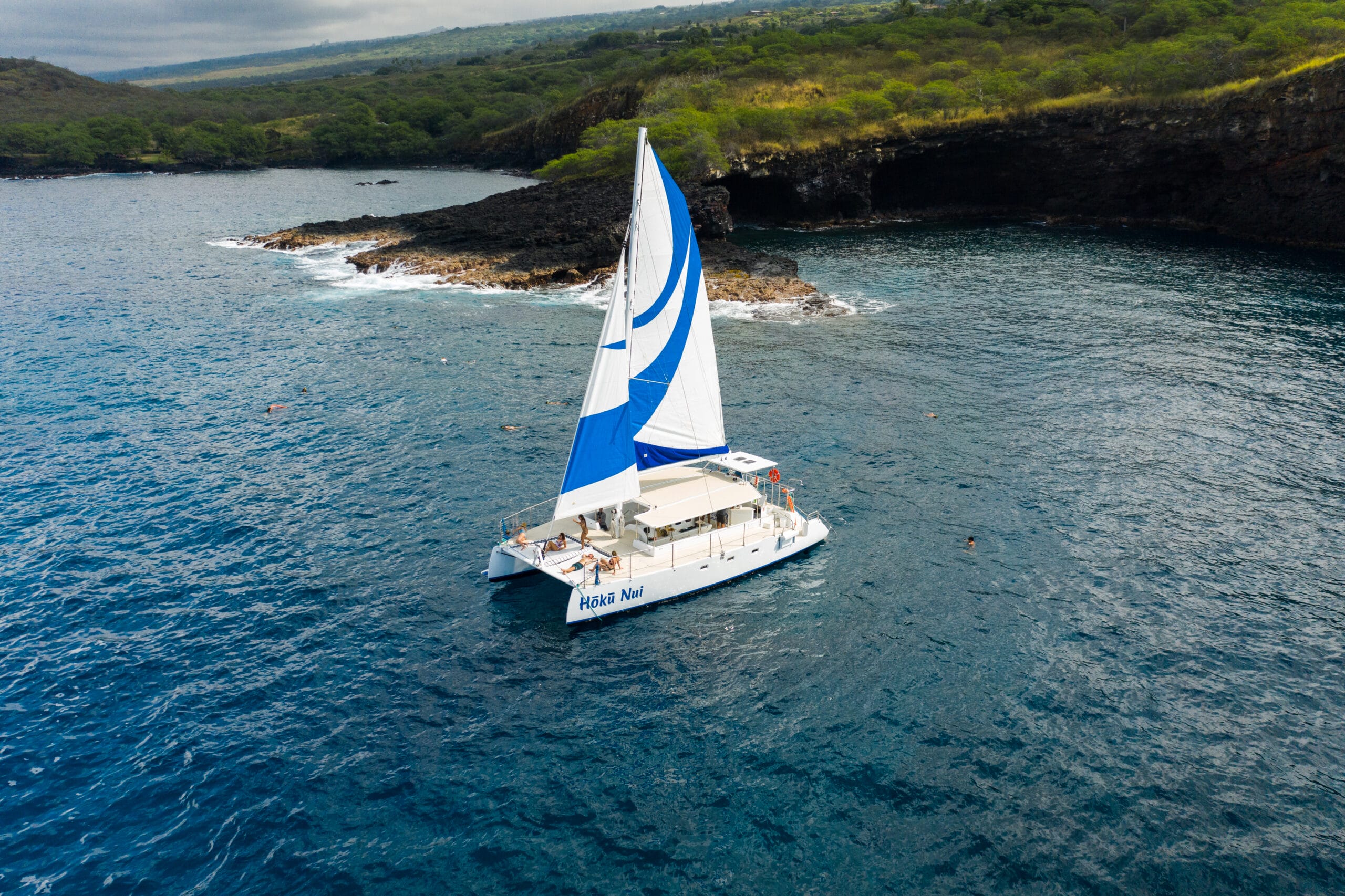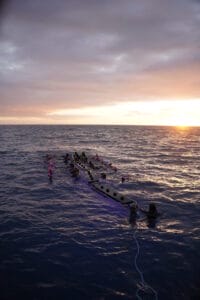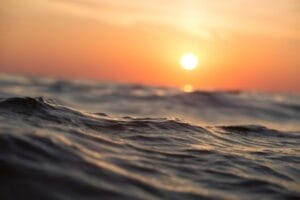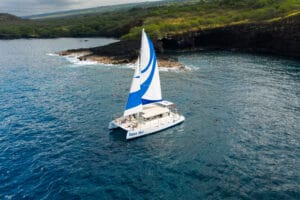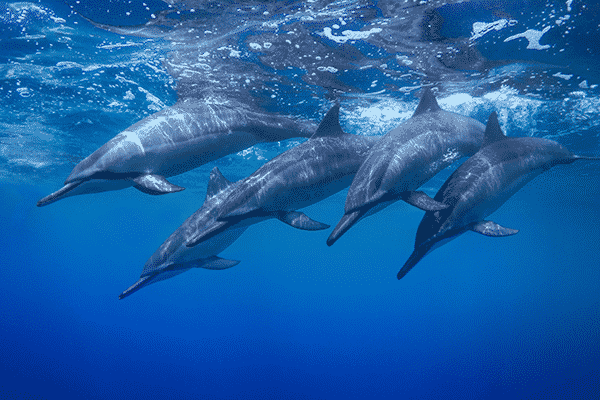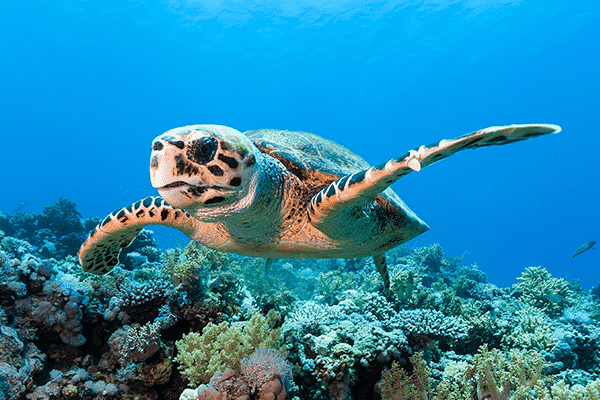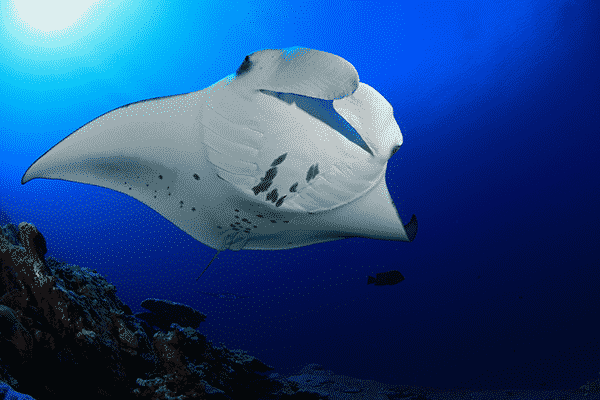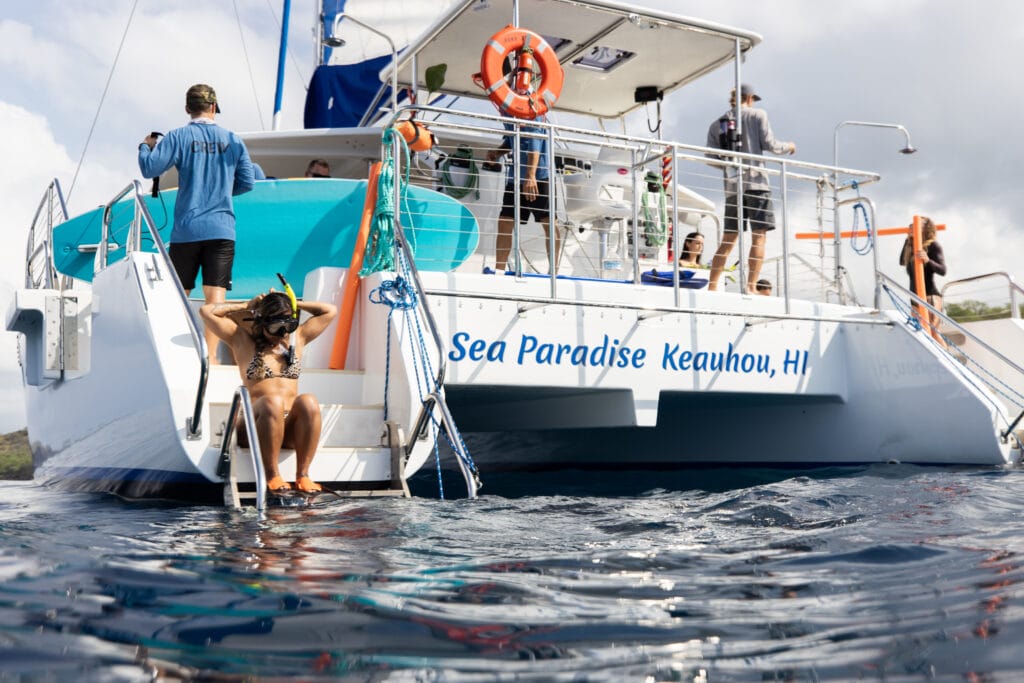On your visit to the island of Hawaii, don’t miss a snorkel or manta ray tour with Sea Paradise on the Kona side of the island. You won’t want to miss experiencing the whole island and observe the differences of the windward (Hilo) to the leeward (Kona) side.
The Big Island of Hawaii is a land of stark contrasts, with distinct personalities on its east and west sides. The west side, known as Kona, is a haven for sun-seekers. Blessed with a dry, sunny climate, Kona boasts stunning white sand beaches, world-class snorkeling and diving, and a vibrant resort scene. Lush golf courses, luxurious hotels, and a thriving culinary scene cater to discerning travelers. Kona also offers a glimpse into Hawaii’s rich history with ancient fishponds, historical sites, and cultural experiences.
In stark contrast, the east side, centered around Hilo, experiences significantly more rainfall. This lush, verdant landscape is a paradise for nature lovers. Rainforests cloak the slopes of Mauna Loa, cascading waterfalls plunge into emerald pools, and volcanic landscapes offer awe-inspiring vistas. Hilo itself is a charming town with a relaxed pace of life, unique shops, and a vibrant arts scene. The east side also provides unparalleled access to Volcanoes National Park, where visitors can witness the raw power of the Earth in action.
The contrasting climates of the two sides profoundly impact the local ecosystems. Kona’s arid conditions support unique desert-like flora and fauna, while the east side’s abundant rainfall fosters lush rainforests teeming with diverse plant and animal life. These distinct ecosystems offer a fascinating glimpse into the incredible biodiversity of the Big Island.
Beyond the natural environment, the cultural experiences also differ. Kona, with its strong historical ties to coffee plantations, offers a glimpse into Hawaii’s agricultural past. Coffee farms, art galleries showcasing local artists, and historical sites like Puʻuhonua o Hōnaunau National Historical Park provide a deeper understanding of the region’s heritage. In contrast, Hilo, with its strong ties to the sea, offers a vibrant fishing culture and a focus on local arts and crafts.
Ultimately, the choice between east and west Hawaii depends on individual preferences. Those seeking sun, sand, and relaxation will likely gravitate towards Kona’s vibrant resort scene and stunning beaches. Conversely, nature lovers and adventure seekers will be drawn to the lush rainforests, dramatic volcanic landscapes, and unique cultural experiences of the east side.

